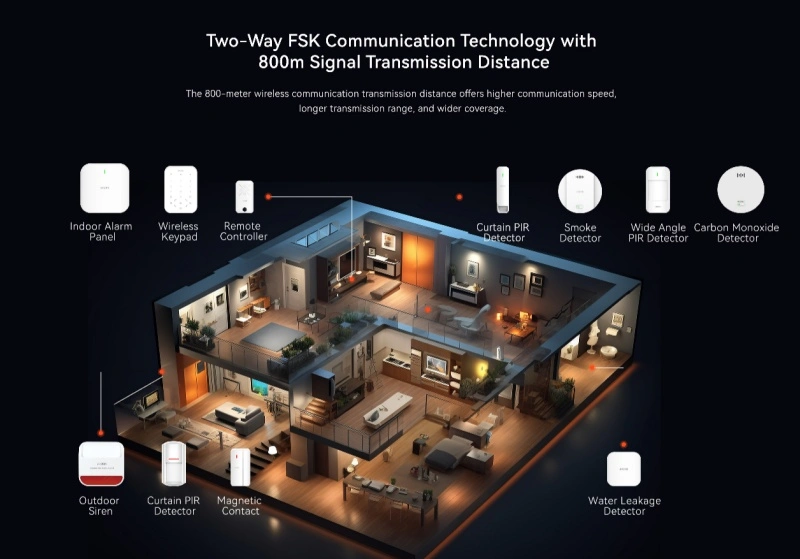What’s included in a home security system?
A full alarm system typically includes several components designed to detect unauthorized entry, monitor environmental conditions, and notify occupants or a monitoring service of any potential issues. Here’s what a comprehensive alarm system might include:
1. Control Panel
- The central hub that connects all the components of the alarm system. It allows users to arm, disarm, and configure the system. It may include a keypad, touchscreen, or be controlled via a mobile app.
2. Keypad or Touchscreen
- A device for entering passcodes to arm or disarm the system. It may be integrated into the control panel or function as a standalone device.
3. Door and Window Sensors
- Contact Sensors: These detect when a door or window is opened by separating a magnet from a sensor.
- Glass Break Sensors: These detect the sound or vibration of breaking glass.
4. Motion Detectors
- Devices that sense movement within a specified area, often using infrared technology to detect body heat.
5. Cameras
- Indoor Cameras: For monitoring the interior of a property.
- Outdoor Cameras: Weather-resistant cameras for monitoring the exterior.
- Doorbell Cameras: Cameras integrated into doorbells to monitor entry points and interact with visitors.
6. Alarms and Sirens
- Loud sirens that activate when the system is triggered, intended to scare off intruders and alert occupants or neighbors.
7. Smoke and Fire Detectors
- Sensors that detect smoke or fire, often integrated with the alarm system to automatically alert the fire department or monitoring service.
8. Carbon Monoxide Detectors
- Sensors that detect carbon monoxide gas, a colorless, odorless, and potentially deadly substance.
9. Flood and Water Sensors
- Devices placed near potential water sources (e.g., basements, bathrooms) to detect leaks or flooding.
10. Panic/SOS Buttons
- Buttons that can be pressed to trigger the alarm system immediately, often used in emergency situations.
11. Remote Controls (Key Fobs)
- Handheld devices that allow users to arm or disarm the system remotely.
12. Backup Power Supply
- A battery or generator that keeps the system operational during a power outage.
13. Wireless or Wired Connectivity
- Systems may use wireless signals (Wi-Fi, cellular) or hardwired connections to link components and communicate with monitoring services.
14. Monitoring Service
- A professional monitoring service that receives alerts from the alarm system and can contact emergency services on your behalf.
15. Smart Home Integration
- Compatibility with smart home systems (e.g., Google Home, Amazon Alexa) for voice control and automation of other home devices.
16. Mobile App/PC software
- An app/PC software that allows users to monitor, control, and receive notifications from their alarm system remotely.
This comprehensive setup provides multiple layers of protection, ensuring that various types of threats (e.g., burglary, fire, flooding) are detected and responded to promptly.

